I was both excited and nervous about going to Kenya recently after a two-year absence. Beyond the extraordinary experience of just being in my happiest of places, there is always the pressure of the photographs. Will they be stronger than they’ve been in the past? Will I find ideas that interest me? Will my new gear and my growing familiarity with it be more of a liability than an asset? These are really all just various questions that grow out of a fear that my images will all be crappy repeats of what I’ve previously made.
Over the years, my photographs from Kenya have felt a little like some version of, “Look, here’s a lion!” What I mean by that is that they’ve sometimes felt like they’ve fallen short of Magnum photographer David Alan Harvey’s advice to “shoot what it feels like, not what it looks like.” I wanted more. One way I hoped to do that was by exploring relationships and interactions, the two words that have been guiding my work since my bear trips last year.
I wanted photographs that are about something rather than just of something. Photographs with a little more story in them. Not just pictures of animals, but also about something more.
I guess what I was asking myself is what felt missing from my existing work. This is a question for anyone to whom challenge and growth are important. For me, the answer was relationships and a stronger sense of story. That’s what has felt missing to me.
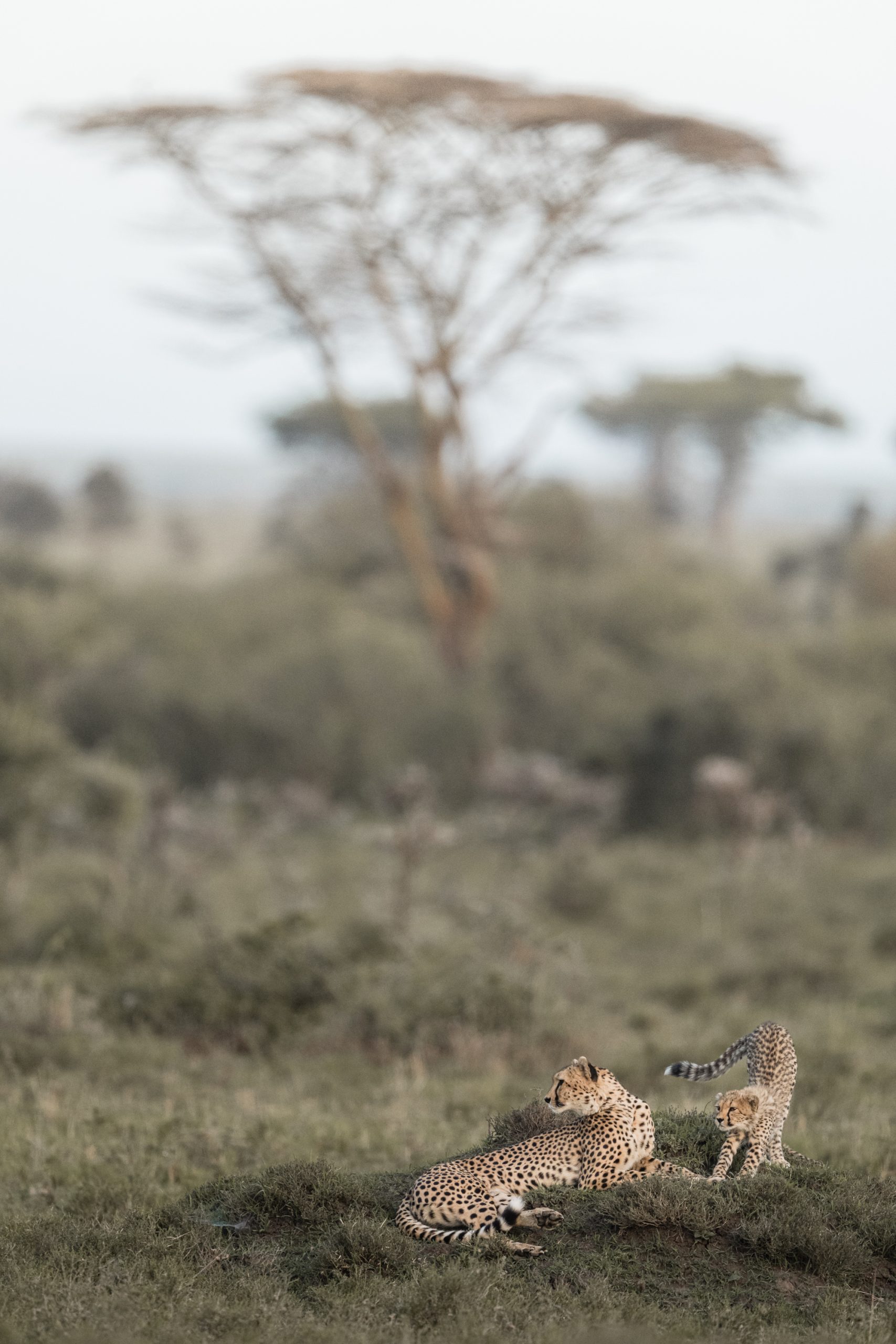
Interactions are challenging to photograph as they are much less opportunistic. A portrait of a cheetah is easier; you see a cheetah, you make a portrait. But interactions are a matter of specific moments, so you spend a lot of time waiting. Waiting for cats to wake up. Waiting for them to do more than stare blankly at you, or at each other. So. Much. Waiting.
When things do happen, they happen quickly and, um, deeply. A portrait of a single cheetah requires much less depth of field than a photograph of two cheetahs where you want the faces of both to be in focus. This is especially important to remember as your lenses get longer. So it was a shift in thinking for someone who, in the past, has generally defaulted to being more wide open with his apertures.
I needed tighter apertures and faster shutter speeds, and, after a conversation with a friend and some reluctant experimentation, that led to a total change in how I photograph.
When I’m photographing on the streets, I’m always in Manual mode, choosing my settings for ISO, aperture, and shutter. When working with wildlife, I’ve defaulted to Aperture Priority mode, setting my aperture fairly wide open and letting the camera decide on the shutter speed and adjusting my ISO as necessary. Here’s what my friend suggested and how I’m doing it now: manual aperture, manual shutter speed, and ISO set to Auto with a maximum of 6400.
Here’s why this works so well for me. First, on the cameras I am using now (Sony a1), images made at ISO 6400 are virtually indistinguishable from images made at ISO 800 if they’re not underexposed. So the old fears about my ISO creeping so high that the images are too noisy to be unusable are now gone. Again, this depends on nailing the exposure, so keep an eye on that histogram and a thumb ready with the EV compensation.
With ISO no longer the consideration it once was, I’m happy to let the camera put ISO where it needs to be. I can keep the aperture exactly where I want it (my starting point is f/8), and my shutter speed never surprises me (it’s always at 1/1000 or higher unless I decide otherwise). So if I like my aperture and shutter, I can set them and (mostly) forget them. All I have to do is watch my histogram and nudge the EV compensation up or down, and I’ve set a thumbwheel on the back of my camera to do that.
I didn’t think I’d love this change; I thought I’d be fighting it. I was determined to give it a go for one day and then go back to the guy who suggested it to tell him he was a doofus. Instead, I’ve completely changed how I shoot, and I will carry this into my street photography as well.
Another change: I shot with a monopod for all my long lens work. I hate monopods with a purple passion. Or I thought I did. But a friend gave me a new monopod head for my birthday and I felt compelled to try it out. (It’s the Wimberley MH-100 MonoGimbal head; here’s a random YouTube review of the head to give you a sense of what I’m talking about.) I figured I’d try it out for a day and then go back and tell him, well, you know.
That didn’t happen, either. Most of the time, I kept the monopod collapsed to its shortest length (about 16 inches) and used it just by resting it on my seat. The gimbal head allowed me complete range of motion while still being supported and not flopping around. With my camera and a teleconverter, my 600mm lens weighs over 8 pounds (3.6 kg), and that’s a lot when you’re waiting with your camera to your eye for something to happen. I’ve been hunching over a bean bag in Kenya for 12 years, and this new way of working—which I resisted and thought I’d hate—was much more versatile. Anyone want to buy a bean bag?
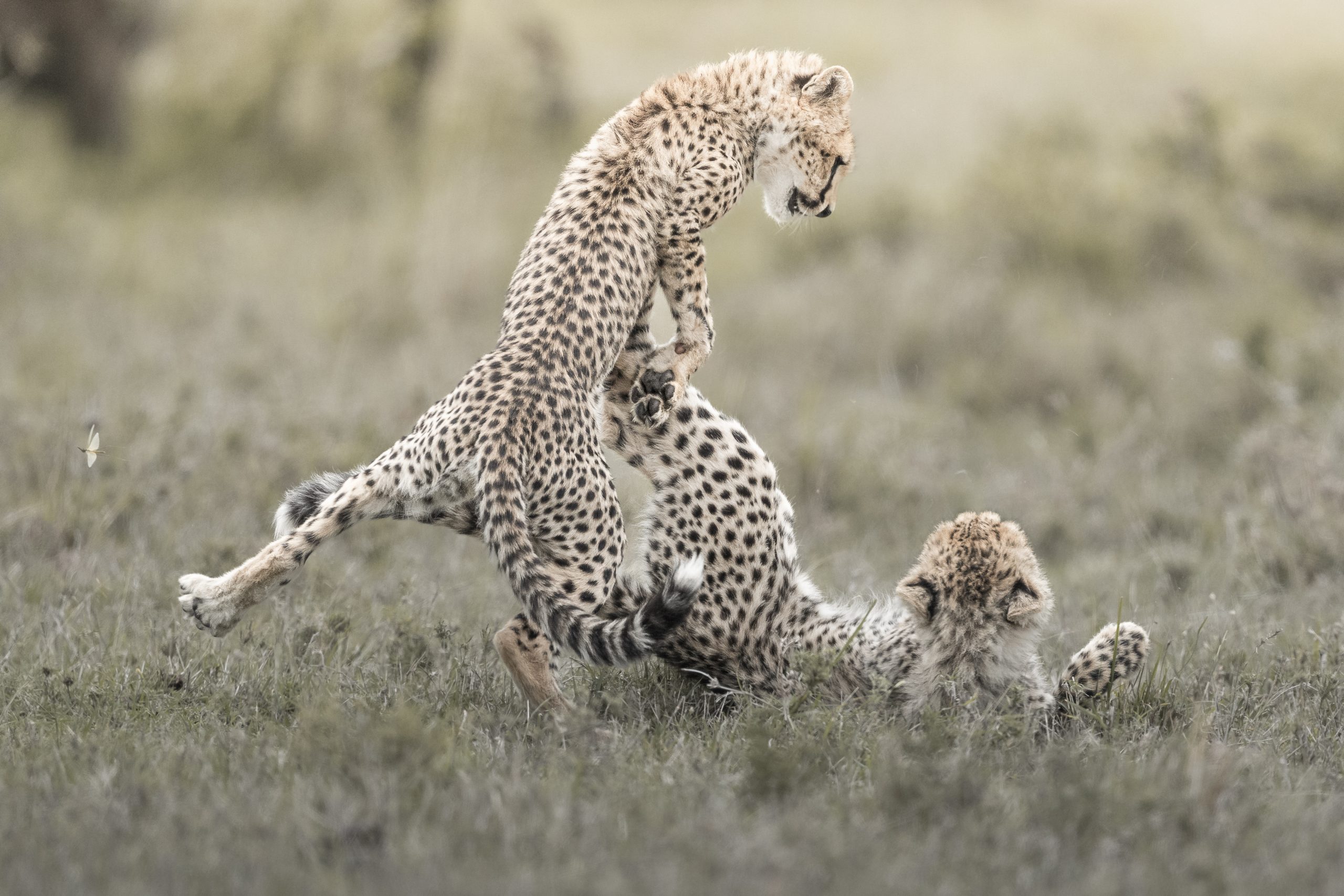
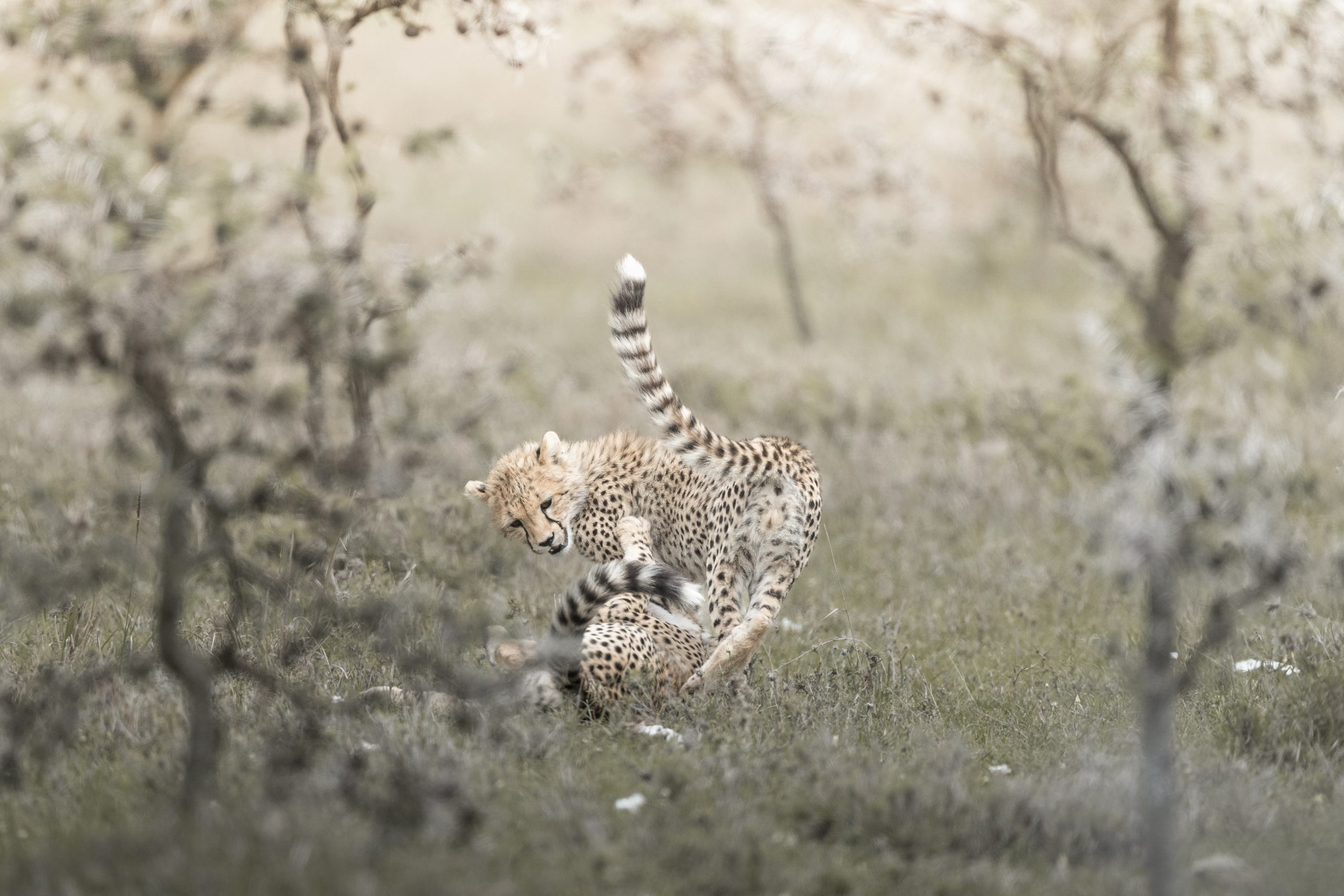
I changed what I was looking for and I changed how I photographed in several ways, from almost all new gear to different techniques.
The point of this isn’t that you should start using auto ISO and shooting in manual, nor that you should get a monopod with a gimbal head or start photographing interactions rather than just portraits—but that you be open to change. Even seek it out now and then.
We can’t evolve or grow without change. I don’t know what it is inside my lizard brain that’s so nervous about change and reluctant to dive into it, but that’s often where the best challenge is. And challenge is one of the prerequisites for Flow, that optimum state of performance that athletes and performers and artists of all kinds have long coveted.
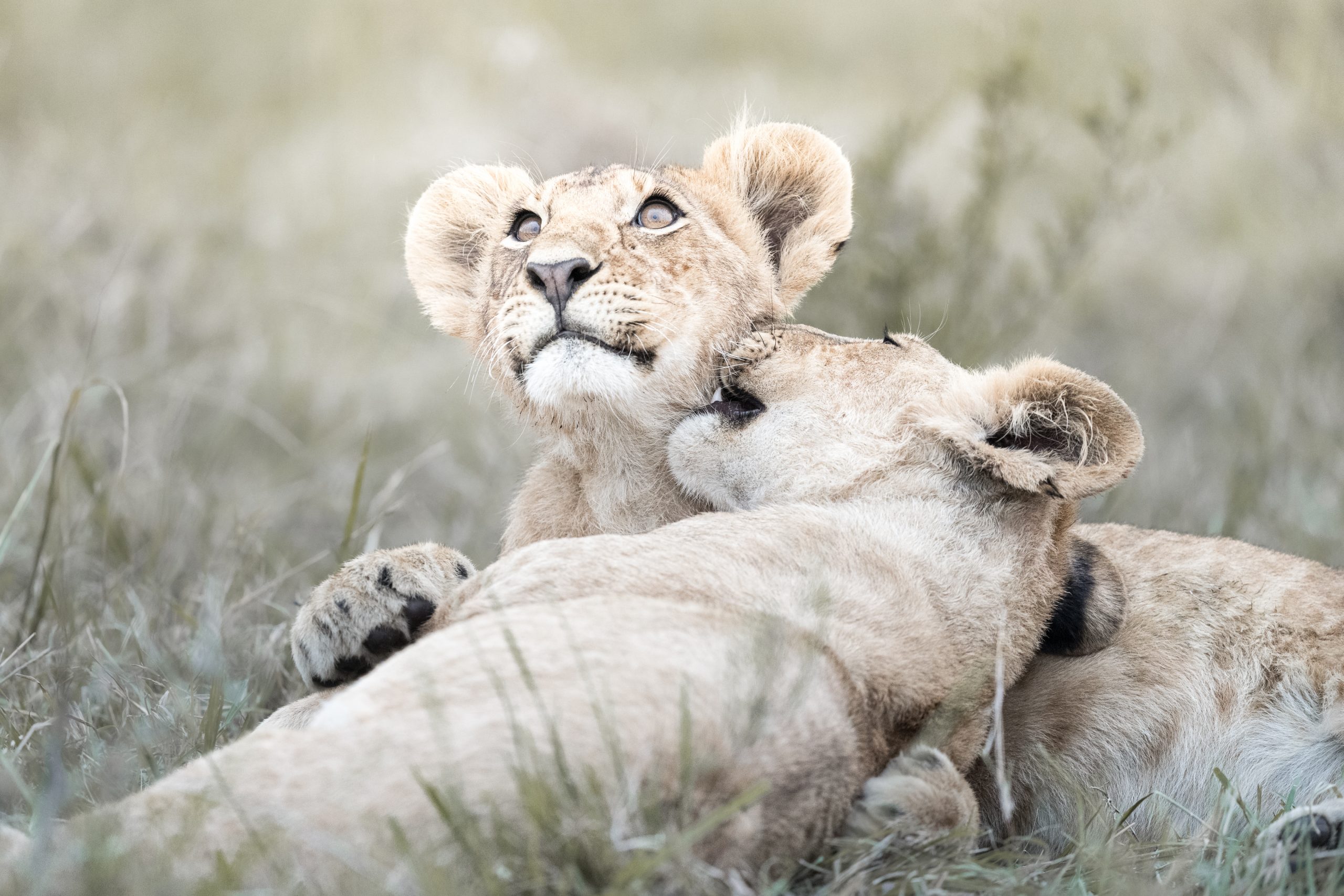
This all started by asking myself, “What’s missing from my work?”
Where is your work heading? Wherever it’s going, the next moves you make will be into a space that you don’t currently occupy, and that forward movement requires new ideas, skills, or techniques. They might seem obvious in hindsight—so simple they’re almost embarrassing to admit. They might also seem scary, and they’ll definitely come with no guarantees. It’s all one great big “What if?” and you never know the answer to that until you try.
After 35 years of making photographs, I know that if the question is, “What if I don’t change anything?” then the answer is that nothing changes.
Remember what Einstein said about insanity and expecting different results while doing the same thing over and over again? Change is where discovery and evolution happen. You’d be crazy not to.
For the Love of the Photograph,
David
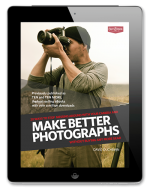
PS – Want more like this? I send these articles out every two weeks to photographers around the world who want to improve their craft and explore their creativity and I’d love to include you. Tell me where to send it and I’ll send you a copy of my best-selling eBook Make Better Photographs, as well bi-weekly articles, first-glimpse monographs of my new work, and very occasional news of resources to help you keep moving forward in this craft we love.
“Each and every one of your emails inspire and motivate me to want to jump right out of my chair away from my computer and shoot for the love of it . Thank you David.” – Millie Brown

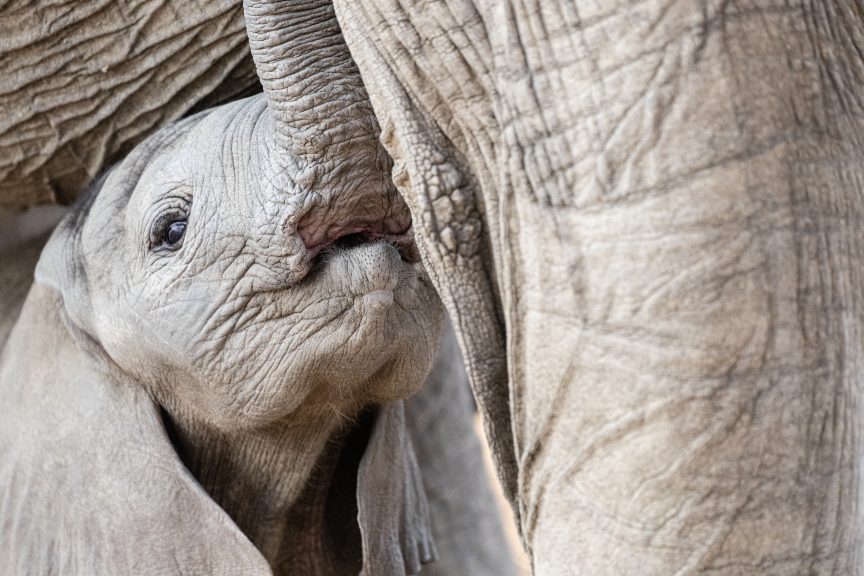
Comments
David, thank you for this profoundly reflective piece. Your journey from capturing “pictures of something” to crafting images “about something” struck a deep chord. Like you, I’ve grappled with the tension between comfort and growth—sticking to familiar settings (Aperture Priority lifer here!) while sensing a nagging absence of narrative depth in my work. Your honesty about resisting change, only to discover liberation in manual mode and the dreaded monopod, mirrors my own shift to prioritizing storytelling over technical safety nets.
The line, “Shoot what it feels like, not what it looks like” has now become my mantra. Recently, I experimented with freezing a dancer’s motion in low light, focusing on the emotion of movement rather than crisp detail. It was messy, but the rawness told a story my earlier “perfect” shots lacked. Your emphasis on interactions—the fleeting glances, the tension between subjects—pushes me to linger longer in scenes, waiting for those unscripted moments.
One question: When balancing manual settings with auto ISO in dynamic environments (e.g., shifting light during wildlife shoots), how do you mentally prioritize aperture/shutter speed without losing the spontaneity of the story?
Your article is a rallying cry to embrace the discomfort of growth. I’ll be revisiting my portfolio with the question, “What’s missing?”—and leaning into the uncertainty. Grateful for your wisdom and vulnerability. Can’t wait to see where this evolution takes your work next.
Cheers,
ak photography
This blog provides valuable insights into enhancing Photographer for Wedding skills. It prompts self-reflection on what might be missing in our work and encourages growth. A thought-provoking read for all aspiring photographers.
Pingback: 4 Ways to Capture the Magic of Camp in Your Photos - UltraCamp
Change, change and more change. Sometimes we choose it and sometimes it’s forced upon us.
Our lives and photography would be boring without it!
It’s kinda like composing a piece of music. Without emotion it is nothing. Without emotion, it doesn’t touch people. It adds LIFE!
“shoot what it feels like, not what it looks like.”
This is GREAT advice and I’m not even a photographer! It could be applied to a lot of things in life.
It is so interesting to read your story of resistance to change and trial then acceptance of the change as you discover how it works for you. So great to read from someone with as much experience as you have.
I am planning a trip to one of my favorite places this year and I’m a little nervous that I will just end up repeating what I’ve done in the past. Maybe I will accept this inspirational post and try to incorporate it into my photography and see how I can change and create something new and tell more story.
I love the Cheetah interactions you captured. I can imagine how helpful that monopod was waiting for those to occur.
Sincerely,
Kyle Reynolds
https://krnaturalphoto.com/
Thank you David. A timely article!
Pingback: Monday Missive — March 7, 2022 | RichEskinPhoto.com: Nature, Fine Art and Conservation Photography
Wonderful article, David, as always. I have a dedicated dial on my camera for wildlife photography. I have now added your auto ISO/6400 to the mix. Your Kenya images are wonderful. There is so much depth and creativity in every image. Absolutely beautiful editing in this series.
Carmody
Thanks, Carmody! Glad it was helpful to you. Just be sure that you’re comfortable with the quality your own particular camera creates at ISO6400. Some might find the better results kind of max out a little lower or higher depending on their camera. Your kind words are much appreciated.
Love this. Years ago at my nephew’s wedding, the wedding photographers sort of adopted me. They let me tag along with my very entry-level Nikon dSLR, answered my questions, encouraged me. The owner of the business gave me the best advice ever. He said that he tried to tell a story with every photo. A no-brainer, right, for wedding photographers, but he was also a former photojournalist. Maybe, a no-brainer for that as well. But, this advice has always stuck with me, so your point in this blog post to look for “interactions” is exactly what I think of for almost every photograph I take. It’s not always there–some photos don’t invite interactions, can’t be found. But the point is–I’m always looking for it. As you say–a portrait is a portrait (or a landscape, or whatever), and it has value for what it is. But how can it be more than that–how can it tell a story?
Thank you David. A timely article! i have also been wrestling with changes in several areas of my life. it is exhausting! that lizard brain has been so useful to avoiding dangers early humans were exposed to for our survival. i’m going to use this info as well as i have been using manual everything in my image making.
Thanks, Karen. So glad it was helpful. Keep that lizard on a leash! 🙂
Thank you for the article. Well worth a thought. I love the photos of the cats together. May I suggest that the first photograph has a lot of wasted space at the top where it is out of focus.
Thanks, Gary. You can suggest anything you like but “wasted” seems a bit harsh for the out of focus top 2/3 of the image. That acacia tree is context, in some significant ways it’s the point of the image – the relationship of the cheetahs to their environment. I spent two hours working this scene and the composition, and it’s one of my favourite images, though I don’t often favour vertical frames. I know the default for wildlife is to get as intimate as possible but I think the wider establishing shots are not only important but a nice break from the “tighter and closer” aesthetic. My photographs won’t ever appeal to everyone.
I like the realness of your pictures and to ask ” What is missing “… some time i think that some over think that and go over board with ” pop” in their editing program . Still they may come up with a great look … but now did a picture just turn in to art work ..
I have been to many places and to see a prize winning picture and say it never looks like that when i was there , one can beat that to death about light ..ect…
This could be from my back ground … started young tinting B&W’s with oils 60’s , then the darkroom before i ever shot a camera , 53yrs shooting , weddings to everything , even my work in books
this thought might be a subject to write about… and thank you for your sharing
Thanks, G.A. You’re not wrong about adding “pop”. I did it plenty in earlier days with Photoshop. Very tempting to let the processing make up for missing substance. I think as we mature (in art, if not in life!) we begin looking for stronger legs to carry our images. That’s the hope, anyways. 🙂
Pingback: What’s Missing From Your Photography? - Ahmed blogs
I never miss your emails, again you have given me ‘food for thought’, thank you again!
Thank you, Eugene!
Awesome to see you have geared up. Me too. It’s a new world, eh? I just came home from shooting ducks on an icy pond with an 800mm. Auto eye focus and all that magic, 1/3200 sec with auto ISO and I was free to compose, to seek a story, like the Mallard on the frozen edge of the pond dipping his toe into the water with the leading edge of the curved “shore” in the background and he was saying, I know, “Kee, kee, kee, keerist it’s cold!”. I could see it in his tack sharp eye.
I am still finding the eye-tracking a little hard to wrap my mind around, John. It’s like there’s some kind of sorcery going on. I don’t get too fussed about sharpness but things sure fall apart quickly when that otherwise wonderful image lacks it where it needs it. My new gear can only be credited with so much, but sharpness is one of them. Amazing.
I hear the autographed David duChemin bean bags are the new rage…..If you issue them as a special edition please do it with a huge smiling portrait shot as those just give it that authentic touch…….but be careful as you may be so successful that you’ll be able to retire soon and we will lose out on your great advice.
Heading to Bots in a few weeks and I thought I had my equipment down pat. Then you have to add on to Steve’s review of the Wimberly monogimbel. D#@% you. Now i’m rethinking the RRS head that I have and which i’ve been on the fence about because the dang thing squeaks. Wildlife photography and squeaking just don’t mesh. I do wish that Wimberley would make quick release clamps and not the screw down ones. I’ve used the monopod in the safari vehicle before as the ergonomics of the bean bags just won’t work for my back. I haven’t tried it short on the seat so i’ll give that a try.
Fully on board about the notion of change. This will be my third safari and the idea of taking images about the wildlife and not just of the wildlife totally resonates. Came around to that point with my street photography a while back. When you hit the wall and don’t know what to shoot you either give up or decide that how i experience something may be different than anyone else, so thats what i need to represent. Being confined to a Toyota Land Cruiser for 2 weeks has its own challenges but the concept you are putting forth is exactly what i’ve been mulling over for quite some time. This time around I think i’m going in thinking more than I have in the past. Multiple trips to a location also gets you familiar with the animals behavior so now its easier to craft a real story.
No more birds on a stick……Birds fly so thats a good place to start……I love motion so panning and experimenting with long exposure shots (yes i have my ND filters)…..Pull out the wide angle lens more often to get more of the sense of place and mood…….super tight for body part closeups…..engage the locals….the list gets longer and longer.
Regards
LOL. I don’t see a big market for the bean bags, but it can’t hurt to try. 🙂 Have a fantastic time in Botswana, Charlie. I’m jealous. I need to make getting to the delta a priority.
Just got the Wimberley head you recommended and I have to admit that its much better than the RRS MH-01 head I was using. Particularly as you can balance the lens which you can’t with the RRS. A little extra stability makes a huge difference with tracking small birds.
I might just start looking to you for gear advice…….Who would have thought that.
LOL. No one would be more surprised than me, Charles! Glad it’s working out for you – good gear can make a world of difference.
A beautiful essay, David. I’ve been shooting with those settings for birds in flight. Yet I love your challenging words to seek out change. My lizard brain resists. But I think it’s time to experiment.
Thank you.
Thank you, Mark. Keep that lizard brain in check! Distract him with something, then go play. 🙂
David, thanks for the timely reminder of the importance of continual evolution and reinvention in our work. I feel that I have not done that for many years and have used excuses various to justify why – all of them rot in the cold light of day.
Thank you also for the beautiful monograph – another one for the collection. I love the desaturated vibe you’ve gone with on this occasion. Can I also mention the wonderful juxtaposition of the Massai with spear and smartphone. “The Smartphone is Mightier than the Spear.” You can have that one for free 🙂
As you mentioned the weight of the gear, and given their recent announcement, I wonder whether you might one day look into Olympus/OM System. If they’ve really improved the sensor tech as claimed (a previous weakness), the light weight, 2x crop factor and weather/dust sealing could be a killer combo for safari work. Just a thought.
Anyway, much love.
Thanks, Gavin. I’m especially pleased to hear your reaction to the image that I call Between Two Worlds. I don’t often title my photographs but that was the concept. If i change my mind I’ll take you up on your kind offer. 🙂
I haven’t given Olympus much thought. My Sony gear is wonderful and ticks all the boxes for me, but I’ve seen the OM gear around for decades in one form or another and they’ve always done the smaller form factor really nicely. Who knows what it’ll all be like in 10 years…
Inspiring post, David. And the relationships and interaction in these images are fantastic! I usually shoot manual and I’m going to limit the ISO and put together this setup for my monopod. That 200-600 gets heavier every year and I’m working and thinking so hard to frame and focus while balancing that waiting and SEEING are taking a backseat. “Free your mind, and the rest will follow” – thank you, as always!
David,
BINGO!!!
Man, you hit the nail on the head with this epistle and the latest Beautiful Anarchy brick laying podcast!
Let me explain. I have Parkinson’s Disease – was diagnosed in 2014 when I was 74 years old. My photography was always my passion and reason for being, but the Parky diagnosis and age kind of got in the way. Since 2014 I have been trying to figure out how to get back to photographing the way I used to before diagnosis. That just hasn’t worked out very well – like peeing in the ocean to raise the level.
Your article today made me realize that I will never be the person I was in 2014. I needed to make a CHANGE (Magic Word) in how I photograph now rather than trying to emulate how I did it prior to 2014. I’m a different person now with different capabilities!
As my dear old grandmother said: “Ve get old too soon and smart to late – too late schmart”.
Thanks for the enlightening kick in keester today!
Hi Cindy – Free the mind, indeed. I often think those words as I’m out there. Amazing what an internal game photography can be. I think if you’re looking to use a monopod with that 200-600 you’ll be amazed by the gimbal head. It’s small, light, and once it’s set up and balanced it is so fluid. I love it. And at less than $200 it’s some of the cheaper gear I’ve ever bought! Let me know how it goes for you.
Coincidentally, I hit on this settings technique just a few days ago! And I, like you, think it will change my work in the field; my studio work will still be all manual.
I do like a good coincidence, Samuel! 🙂 It’s not rocket science, is it, but what a difference it makes for me.